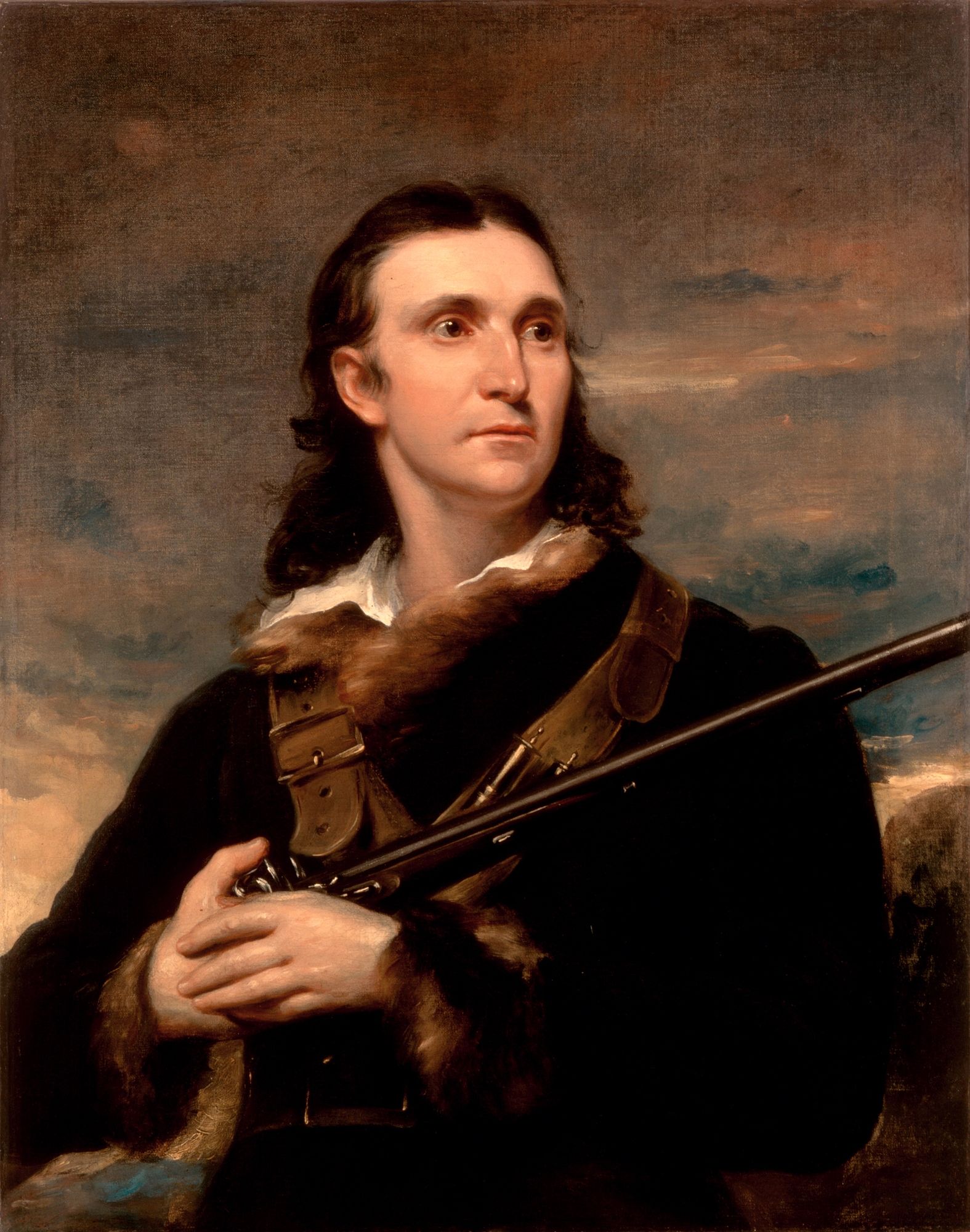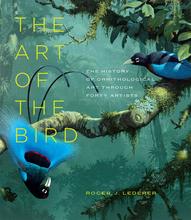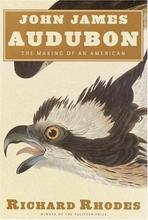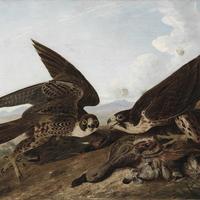More about John James Audubon
- All
- Info
- Shop
Works by John James Audubon

Sr. Contributor
The life of John James Audubon was full of outdoors adventures, lies, failure, and murder.
John James Audubon was born in the French colony of Haiti in 1785 on his father’s sugar plantation. His father, Lieutenant Jean Audubon, was a worldly man with more than one mistress, making the identity of Audubon’s mother debatable. She could have been a white, French chambermaid or a mixed-race housekeeper, with the former being the more acceptable choice for the time. Either way, Audubon was illegitimate and ashamed of his birth story, so he repeatedly lied about his upbringing, saying he was born in Louisiana to respectable parents.
Legitimate or not, Audubon was living the high life in Nantes, France by the age of five. Audubon spent his days playing flute and violin, riding horses, fencing, dancing, and roaming the woods around his father’s estate. During his frequent jaunts, Audubon would collect foliage, bird eggs, and nests from which he would make amateur drawings. Audubon claimed his jump from amateur to professional artist was partly due to lessons he received from French Neoclassical painter Jacques-Louis David while in Nantes, but there is no proof that ever actually happened.
The lies continued when Audubon was sent to America in 1803 with a false passport in order to avoid conscription in the Napoleonic Wars. When he arrived in America, Audubon was tasked with managing the family plantation, Mill Grove, in Philadelphia. Instead of staying inside and tending to the books, Audubon was always outdoors hunting, collecting specimens, and drawing. Audubon’s interest in birds skyrocketed while at Mill Grove. In addition to sketching environmental curiosities, Audubon conducted the first ever bird banding experiment to track the migration and nesting practices of Eastern Phoebes.
Audubon struggled to draw birds accurately en plein air because of their skittishness, so he built a contraption he called a “wire armature” on which he mounted freshly killed birds in lifelike positions to draw from. All this was great for Audubon the artist, but disastrous for Audubon the businessman. Audubon’s neglect of his Mill Grove duties forced the family to lose the plantation; this was the first of many failed business ventures for young Audubon. After Mill Grove, Audubon moved to Kentucky and tried his hand at, well, everything: owning a general store, managing housekeepers, running a saw and gristmill, selling portraits, teaching art, dance, and French...and taxidermy. He even had a side gig buying and selling slaves, but his passion for escaping into nature prevented him from financial success and he was jailed for bankruptcy in 1819.
Imprisonment knocked some sense into Audubon and he decided to make a go of being a full-time artist. For five years, Audubon traveled across North America drawing and painting over 400 species of birds, 25 of which he discovered. He traveled as far north as Labrador, Canada, as south as the Everglades, and as west as the Dakota Territory in search of specimens to sketch. Audubon’s process was to spot a bird, shoot it, use his wire armature to arrange the corpse in a nice position, draw the bird, fill the drawing with watercolors, perform an anatomical dissection of the bird, and, if he was feeling really adventurous, cook and eat the remains. This was definitely not PETA approved. Along with his drawings, Audubon would write embellished descriptions of his experience with the birds, sometimes commenting on their taste. In case you were wondering, don’t eat ravens, as their flesh is apparently “tough and unfit for food”.
In 1826, Audubon decided it was time to share his findings with the world. Between 1827 and 1838, Audubon’s "The Birds of America" was published in 87 parts of 5 plates each, totaling 435 hand-colored engravings of 1,065 birds. "The Birds of America" is considered one of the greatest examples of book art and remains a standard against which 20th and 21st century bird artists are compared. Today, Audubon’s artistic and ornithological legacy continues through the National Audubon Society whose mission is to “protect birds and the places they need, today and tomorrow.” That's a pretty good ending for an illegitimate, financially incompetent bird murderer.
Sources
- “About Us.” National Audubon Society. Accessed October 23, 2021. https://www.audubon.org/about.
- “John James Audubon.” National Gallery of Art. Accessed October 23, 2021. https://www.nga.gov/collection/artist-info.122.html.
- “John James Audubon: A Closer Look at the Man for Which the National Audubon Society is Named.” John James Audubon Center at Mill Grove. National Audubon Society. Accessed October 23, 2021. https://johnjames.audubon.org/john-james-audubon-0.
- “John James Audubon: A Complicated History.” National Audubon Society. Accessed October 23, 2021. https://www.audubon.org/content/john-james-audubon.
- “John James Audubon, Part 2.” Crystal Bridges Museum of American Art. Last modified August 30, 2014. https://crystalbridges.org/blog/john-james-audubon-part-2/.
- Rhodes, Richard. “John James Audubon: America’s Rare Bird.” Smithsonian Magazine. Last modified December 1, 2004. https://www.smithsonianmag.com/science-nature/john-james-audubon-americ… -97819781/.
Featured Content
Here is what Wikipedia says about John James Audubon
John James Audubon (born Jean-Jacques Rabin, April 26, 1785 – January 27, 1851) was a French-American self-trained artist, naturalist, explorer and ornithologist. His combined interests in art and ornithology turned into a plan to make a complete pictorial record of all the bird species of North America. He was notable for his extensive studies documenting all types of American birds and for his detailed illustrations, which depicted the birds in their natural habitats. His major work, a color-plate book titled The Birds of America (1827–1839), is considered one of the finest ornithological works ever completed.
Audubon is also known for identifying 25 new species. He is the eponym of the National Audubon Society, and his name adorns a large number of towns, neighborhoods, and streets across the United States. Dozens of scientific names first published by Audubon are still in use by the scientific community. Audubon was accused during his life as well as posthumously of academic fraud, plagiarism, and scientific misconduct; and more recently criticized for involvement in slavery and his racist writings.
Check out the full Wikipedia article about John James Audubon













